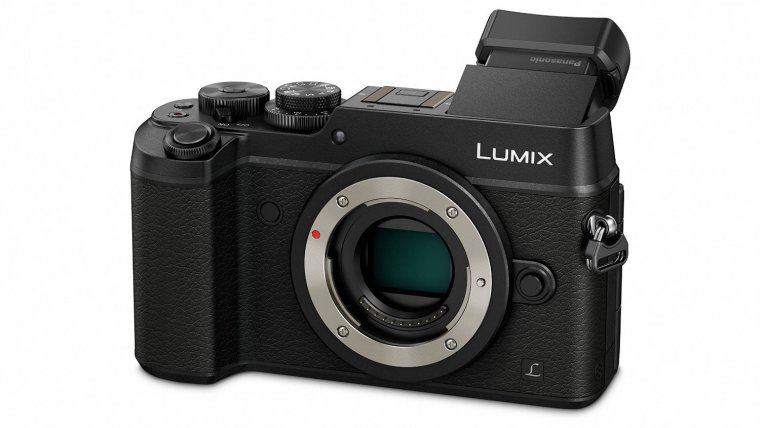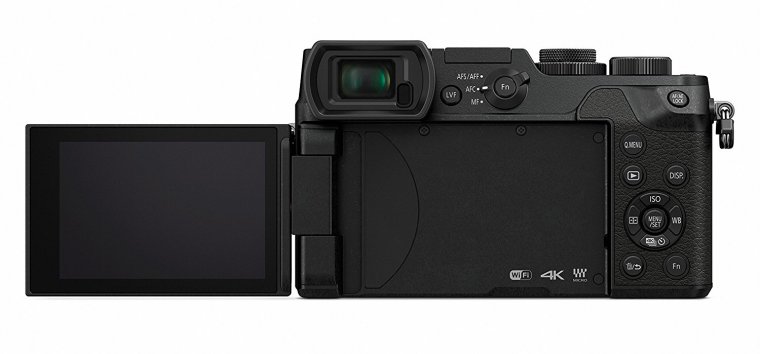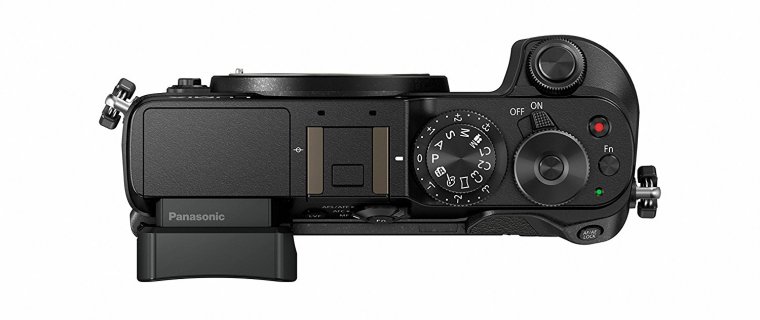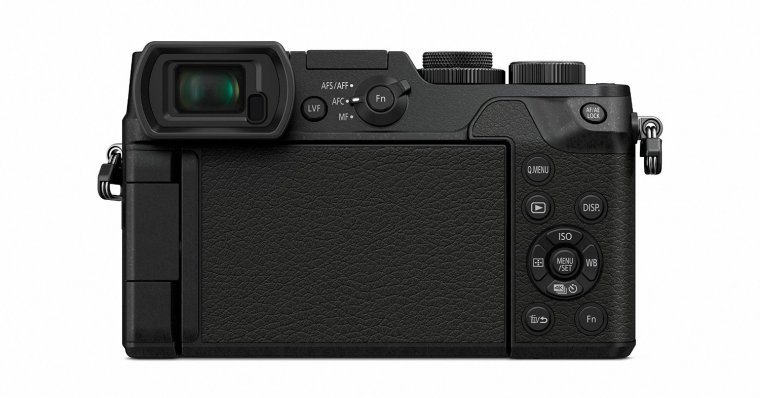
As we all know, Panasonic are one of the leaders on the mirrorless camera market and it’s always exciting to review one of their cameras. This time we have a real flagship on our hands and we can’t wait to put it through its paces. While a Micro Four Thirds camera might not sound so exciting to some in a world of APS-C and full-frame mirrorless cameras, you still shouldn’t dismiss it because of the smaller sensor size. Micro Four Thirds sensors have come a long way and here we have latest and the greatest there is, so it should still exhibit some excellent image quality, even when compared to the larger sensors.
Don’t forget that you also get the benefit of having lenses that are smaller in size and more manageable which is quite important to have on the camera of this size that was meant to be easy to carry or to travel with. Now that we’ve established that a Micro Four Thirds camera can be a very capable and serious tool when it comes to image quality let’s so let’s see what this one is made of.
Let’s see if Panasonic can still keep their reputation with the GX8.
Table of Contents
The GX8 is one beautifully solid camera. Being made out of magnesium alloy and weather sealed support this fact, but even the buttons and dials feel good and refined. The grip is not the deepest you’ll see on a mirrorless camera, but it should still work ok for most people.
The design in general is good, nothing feels out of place and the camera itself also looks attractive and minimalistic at the same time. The button layout is what you would expect from a Panasonic camera or in general a camera of this type. Because the left top side of the camera is taken by the viewfinder all of the main dials and buttons are located on the right of the camera. There you’ll find the main mode dial and the exposure compensation dial underneath it, secondary dial, movie record button and of course the shutter button.

We couldn’t mention the GX8’s body without mentioning that fantastic EVF. The one on its predecessor was also good but this one is larger and features a better display technology, meaning OLED. It’s vivid, sharp and lag free, so it’s everything you would look in a quality EVF. Now, the decision to give it the ability to tilt which resulted in the removal of the flash unit is a bit controversial and will not be to everyone’s liking, but we will give Panasonic a pass because they are trying to make something different and provide a more unique shooting experience. You can still mount an external flash via the hot-shoe, so it’s not really the end of the world.
When it comes to actually using the GX8 you will be really happy with the sheer amount of customization it offers since you get 13 different on screen and physical buttons to assign different functions to. You can also swap the default functions of the of the dials meaning you can choose which one will control aperture and which one will control the shutter speed. There’s also a Q. Menu which let’s you assign the a lot of different functions to it giving you the ability to gain easy access to some of the functions that would otherwise be buried in deep in some menus and not easy to access with ease.

This is also where having a touchscreen really helps to make the overall experience that more intuitive than having a traditional display. We couldn’t end this part of the article without mentioning the Dual IS technology. While it would take almost a half of this article to explain how it works in detail, we will only mention what kind of a performance you can expect out of it. Panasonic claims an increase in performance of 3.5x when using a wide-angle lens and 1.5x when using a telephoto one and we can say that those claims do hold up. You can shoot at noticeably lower shutter speeds than with the Dual IS turned of so it is a big improvement over the GX7 which lacked this feature. So, in conclusion, the GX8 is a joy to use from every standpoint and anyone who decides to buy it will be very happy with the shooting experience it brings to the table.
The GX8 features the same 49-point contrast-detect AF system found in the GX7, which has already proven to be very capable, so we expect the same kind of good performance here. There’s also Panasonic’s now familiar Depth from Defocus technology on board to help make that performance even more solid. Right of the bat, we can say that the GX’s AF system performs very admirably in all situations.
The subject tracking in this camera works by placing an array of cross-hairs in the center of the screen which “attach” to the subject you are trying to follow when you half press the shutter button. While it doesn’t work as fast and as reliable like on some professional sports cameras that use phase-detect autofocus it is still well above average performance for a camera in this class. You also get other AF modes like a traditional focus method that works just by tapping the touchscreen.

The Face Detect AF is also very well implemented and works reliably. It works by putting a yellow square on the closest face it detects and that same square turns green when the focus is acquired. Something we are quite surprised is the inclusion of the Eye detection meaning that the camera can put a set of crosshairs over your subject’s eyes when it focuses on them, a pretty unique technology if you ask us. When it comes to the general performance of the GX8, we can call it nothing else than excellent. You won’t experience any hiccups or slowdowns with this camera no matter what you do, it is a true flagship product in that regard.
In regard of maximum burst rate, it’s a little complicated to judge the performance because of sheer amount of different burst modes available. First you need to choose between using the electronic and the mechanical shutter, meaning you will get either a maximum burst rate of 10 fps or 8 fps by using the latter. Keep in mind that the continuous AF isn’t available in any of these modes and you’ll need to drop the burst rate to 6 fps to get it, so we will focus only on that particular mode because most of you who plan to use burst rate will probably be shooting a subject that will move unpredictably or moving further or closer to you.
While the buffer sizes in this mode are impressive giving you the ability to shoot an unlimited number of JPEGs and around 41 RAW files, the burst rate itself brought somewhat strange results. When in Single AF mode the maximum burst rate sits around 5.5 fps, but it drops below 4.5 fps when the Continuous AF is being used or if the image stabilization is turned on. We’ve never seen a camera act like this before and it seems like it’s a bug in camera’s firmware and we hope that Panasonic will fix it in near future. It’s a shame, because of how well the AF system in the GX8 performs that we can’t say the same about the burst rate.
The battery life also isn’t very impressive with a maximum of 330 shots you can get out of the camera, which is lower than many of the cameras it aims to compete with. In conclusion, we can only state that the GX8 is a good performer when we take into account the good and the not so good. We would call it an excellent one if it wasn’t for the average burst rate performance and below average battery life. At least you can fix the battery life easily just by purchasing a spare battery.
The GX8 received a big upgrade when it comes to video over the GX7, meaning that you now have 4K video recording on your disposal at an impressive bit-rate of 100 Mbps. Of course you still get 1080p recording with a maximum framerate of 60 fps giving you some room for doing a slow motion video. You also get the new 5-axis stabilization when shooting in 1080p, sadly it doesn’t work in 4K mode meaning you’ll have to rely on the stabilization built inside your lens (if it has one).
The GX8 comes with all the features you could think of having on a respectable camera, meaning you’ll get different exposure modes, focus peaking, zebra patterns, microphone adjustment and so on. If you aren’t happy with the sound recorded with the integrated stereo microphones you can always attach an external one via the 2.5mm jack. The Touch Focus AF and Continuous AF all work in video mode too and work as well as when shooting stills, so no complaints here.
If you still aren’t convinced of how useful is it to have 4K video recording on your camera, than the 4K Photo feature might change your mind. You can extract 8 megapixel still frames from the recorded videos with this mode meaning you get an additional burst mode option of 30 fps. While the quality of those images isn’t like that of the usual stills you’ll get out of the GX8 it is still good enough to be compared with your average smartphone, meaning they’ll still be good enough for web use.
When it comes to the general picture quality you can expect out of the videos shoot with this camera we are happy to say that it’s very good. Videos look pretty sharp and clean when shooting in good light and almost noise free in low light up to the ISO of 3200. Kudos to Panasonic for turning the GX8 into a great video recording tool when you conclude judging by it looks that it’s primarily a stills camera. We are very glad to be wrong in cases like these.
Now on to the final and most important part of this article for the most of you, the image quality. The increase in the resolution when compared to the 16 megapixel sensor in its predecessor does bring noticeable increase in detail and sharpness. When shooting JPEG, you’ll notice that the sharpening algorithms are less aggressive because of that increase meaning you’ll get more cleaner and artifact-free images.

The colors it produces always go towards natural and they are never oversaturated, which is of course neither a bad or a good thing since it’s all very subjective meaning that some prefer more neutral looking images and some prefer more pop in their photos. Noise performance is about the same as on the GX7 which is actually a respectable performance considering that the increase in resolution usually results in getting more noise in the images. It still isn’t a performance that can compare to higher-end DSLRs or other premium cameras with APS-C sensors, but it’s still far from being unusable.

The dynamic range you can expect out of the GX8 sits around 12.5 EV at the base ISO, again a very respectable number for a Micro Four Thirds camera that can also surpass some cameras with larger APS-C sensors. So, overall, most of the people should be very satisfied with the images they can get out of the GX8 and only those that need an extremely good performance at higher ISO levels will need to move away to a camera with a larger sensor.
Panasonic did it again, they’ve managed to make a yet another flagship camera worthy of their name. The GX8 improves on its predecessor in almost every aspect and is also a very good camera in its own right. As with most of the cameras, there are some areas that need a little more polish like the burst rate, battery life and a smallish grip, but they are overshadowed by the sheer amount of positive things that could be said about the GX8.
It’s a well built, full featured mirrorless camera that produces great photos and videos, nothing more needs to be said. So if you’re in a market for this type of camera there is no real reason why the GX8 shouldn’t be at the top of your shopping list.
You might also want to read our Lumix ZS50 review, another Panasonic Lumix beauty to consider.
Comments (0)
There are no comments yet.